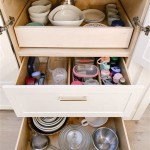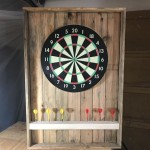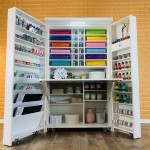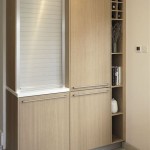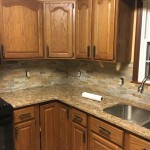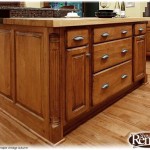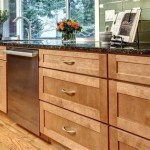How To Choose The Best Laser Level For Cabinets In Kitchen
Installing kitchen cabinets requires a high degree of precision. Even slight misalignments can lead to functional problems, aesthetic imperfections, and ultimately, a less-than-satisfactory result. A laser level is an indispensable tool for achieving the accuracy necessary for a professional-looking installation. It provides a clear, consistent reference line, eliminating the guesswork associated with traditional levels and ensuring cabinets are plumb, level, and aligned correctly.
Choosing the right laser level for cabinet installation is a crucial decision that impacts the efficiency and accuracy of the project. A range of laser levels are available, each with varying features, capabilities, and price points. Understanding the specific requirements of kitchen cabinet installation and the characteristics of different laser levels is essential for making an informed choice.
This article will explore the key considerations for selecting the best laser level for installing kitchen cabinets, covering the different types of laser levels, essential features to look for, and factors to consider when making a purchase decision.
Types of Laser Levels
Laser levels are categorized based on how they generate and project the laser beam. The most common types are line lasers, rotary lasers, and dot lasers, each offering different features and suitability for specific applications.
Line Lasers: These are the most popular type for interior projects, including cabinet installation. Line lasers project a single, highly visible line horizontally, vertically, or both. Some models project multiple lines simultaneously, increasing efficiency for complex tasks. Line lasers are generally self-leveling, automatically correcting for minor deviations from a level surface. They are typically compact, lightweight, and easy to use, making them ideal for cabinet work.
The self-leveling feature in a line laser is crucial for speed and accuracy. Instead of manually adjusting the level using vials of liquid, the laser automatically compensates for slight imperfections on the mounting surface, typically within a few degrees. This allows the installer to quickly establish a level reference line without constant adjustments.
Rotary Lasers: Rotary lasers emit a beam that rotates 360 degrees, creating a continuous horizontal or vertical plane. While often used for larger outdoor projects, they can also be useful for kitchen installations, particularly in open-concept designs or when installing multiple rows of cabinets. The rotary action provides a constant reference line around the entire room, facilitating alignment and layout.
The main advantage of a rotary laser is its ability to cover large areas quickly. However, rotary lasers tend to be more expensive and bulky than line lasers, and require a detector (receiver) to be used effectively in bright light conditions. For most typical kitchen installations, a line laser offers a more practical and cost-effective solution.
Dot Lasers: Dot lasers project a single point of light. They are primarily used for transferring points from one surface to another, such as aligning objects vertically. While less common for establishing continuous level lines, dot lasers can be useful for specific tasks like marking stud locations or transferring measurements accurately. Dot lasers are typically less expensive than line or rotary lasers but offer limited functionality for cabinet installation.
Ultimately, the choice of laser level type depends on the specific tasks involved in the cabinet installation. For the majority of kitchen projects, a self-leveling line laser provides the best combination of accuracy, ease of use, and affordability.
Essential Features to Look For
Beyond the type of laser level, several features significantly impact its performance and suitability for kitchen cabinet installation.
Self-Leveling Range: The self-leveling range specifies the degree of deviation the laser can automatically correct. A wider range allows for more flexibility in mounting the laser level on uneven surfaces. A range of ±4 degrees is generally sufficient for most kitchen installations. A wider range is generally better because it means less fiddling with manual leveling.
Accuracy: Accuracy is the measurement of how close the laser line is to true horizontal or vertical. It is typically expressed in millimeters per meter (mm/m) or inches per foot (in/ft). Higher accuracy is critical for achieving precise cabinet alignment. Aim for a laser level with an accuracy of at least ±3mm/10m (±1/8 inch per 30 feet) or better.
Visibility: The visibility of the laser line is crucial, especially in brightly lit environments. Green laser beams are generally more visible than red laser beams, offering better contrast and clarity. Consider a green laser level if working in a well-lit kitchen or if experiencing difficulty seeing red laser lines.
The color of the laser matters. Green laser lines are generally easier to see than red laser lines, especially in brightly lit environments. This is because the human eye is more sensitive to green light. While green laser levels are typically more expensive, the increased visibility can significantly improve efficiency and accuracy.
Mounting Options: The ability to mount the laser level in various positions is essential for flexibility during cabinet installation. Look for a laser level with multiple mounting options, such as a magnetic base, a tripod mount, or a clamp. A magnetic base allows for easy attachment to metal surfaces, while a tripod provides a stable platform for vertical and horizontal alignment. A clamp can be useful for securing the laser level to cabinets or other fixtures.
Battery Life: Battery life directly affects the duration of uninterrupted work. Consider a laser level with a long battery life or the ability to use rechargeable batteries. Some models also offer battery level indicators to provide a warning before the battery runs out. Extended run time is a significant benefit, especially for larger installations, as it reduces downtime for battery replacement.
Durability: Kitchen environments can be demanding, with potential exposure to dust, moisture, and accidental impacts. Choose a laser level that is built to withstand these conditions. Look for features like impact resistance, water resistance (indicated by an IP rating), and a rugged housing.
Factors to Consider When Making a Purchase Decision
Selecting the right laser level involves more than just identifying the appropriate type and key features. Several other factors influence the final decision.
Budget: Laser levels range in price from inexpensive entry-level models to professional-grade units. Determine a realistic budget before starting the search. Consider the frequency of use and the importance of accuracy when allocating funds. While it may be tempting to opt for the cheapest option, investing in a higher-quality laser level can save time and frustration in the long run. Consider the long-term value and potential benefits of a more expensive model when making a decision.
Project Size and Complexity: The size and complexity of the kitchen cabinet installation influence the required features and capabilities of the laser level. For smaller, simpler projects, a basic line laser with essential features may suffice. Larger, more complex projects may require a rotary laser or a line laser with advanced features like multiple lines and a longer range.
User Experience: The ease of use and user-friendliness of the laser level are important considerations. Look for models with intuitive controls, clear displays, and comprehensive instructions. A laser level that is easy to set up and operate will save time and reduce the risk of errors. An intuitive interface minimizes the learning curve and maximizes productivity.
Warranty and Support: A reliable warranty and readily available customer support can provide peace of mind in case of defects or malfunctions. Check the warranty terms and conditions before making a purchase. Read online reviews and consider purchasing from a reputable brand with a strong track record for customer service. A solid warranty protects against potential defects and ensures access to support if needed.
Accessories: Consider the accessories that may be needed for the cabinet installation, such as a tripod, a laser detector, or a target plate. Some laser levels come with these accessories included, while others require them to be purchased separately. Factor the cost of accessories into the overall budget. Essential accessories can significantly enhance the functionality and versatility of the laser level.
Reviews and Ratings: Before making a final decision, read online reviews and ratings from other users. This can provide valuable insights into the performance, reliability, and user-friendliness of different laser level models. Pay attention to both positive and negative reviews to get a balanced perspective. Real-world user feedback provides valuable insights into the pros and cons of different laser levels.
Return Policy: Ensure a clear understanding of the retailer's return policy before making a purchase. This allows the laser level to be returned if it does not meet expectations or is not suitable for the intended application. A flexible return policy provides peace of mind and reduces the risk of being stuck with an unsuitable tool.
By carefully considering these factors and selecting a laser level that meets the specific requirements of the kitchen cabinet installation, the project can be completed with accuracy, efficiency, and a professional finish.

How To Use A Laser Level For Installing Cabinets And Shelves Handy Intice

Install Kitchen Cabinets Rta Remodel With Laser Level

The Importance Of Using A Laser Level When Installing Kitchen Cabinets Lifestylemanor

Best Laser Level 2024 The Key To Millimetre Perfect Diy Projects Expert Reviews

Mastering Kitchen Cabinet Installation With A Laser Level Step By

The 8 Best Laser Levels In 2024 Self Leveling

8 Best Laser Levels 2024 Reviewed

Best Laser Levels For Pros And Diyers Pro Tool Reviews

The 7 Best Laser Levels Of 2024 Expert Picks
How To Calculate Linear Can For Kitchen Cabinets Quora
Related Posts

